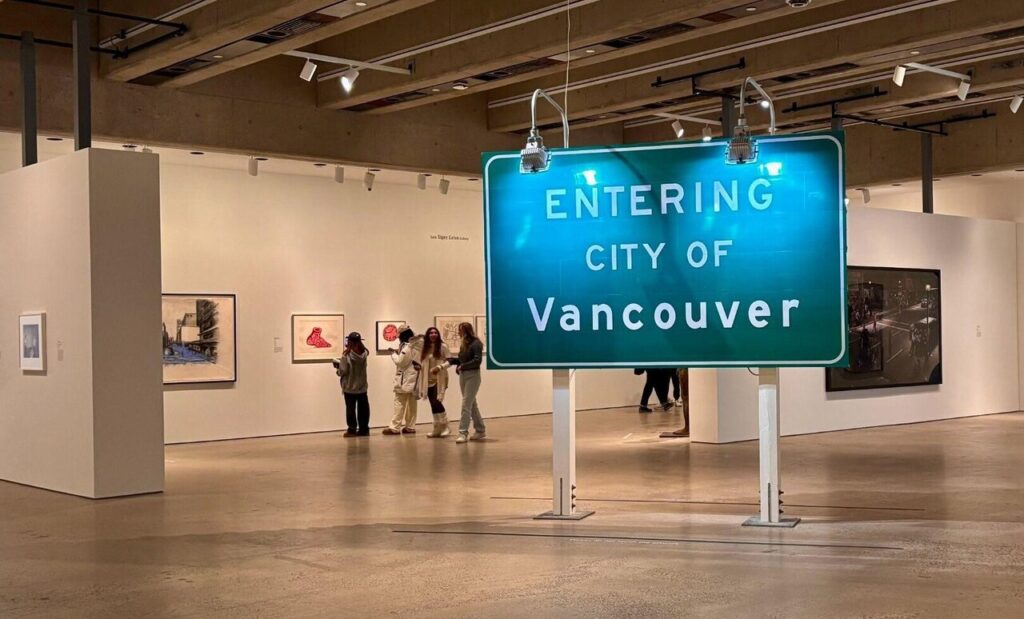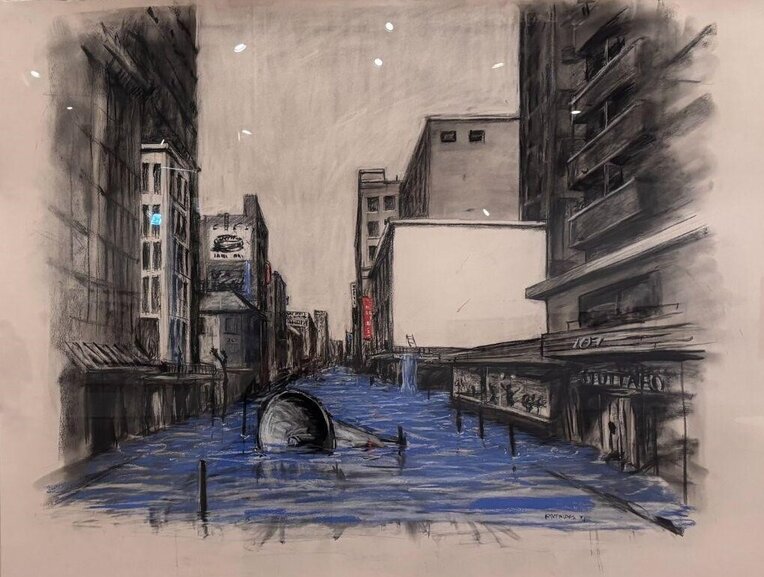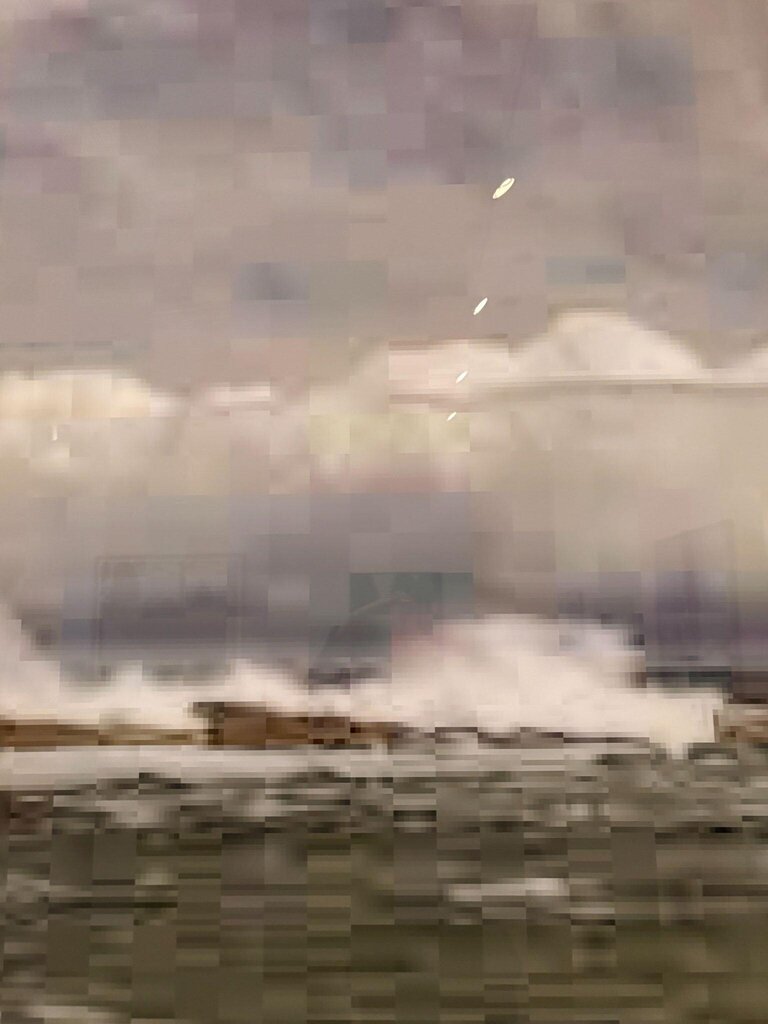The late Phil Lind (1943-2023) leaves behind a legacy in business, philanthropy, and art, all of which have contributed to a revitalization of Canadian culture. The AGO showcases Lind’s innovative legacy as a significant figure in the media business and art world through Light Years: The Phil Lind Gift. In all, the exhibition allows Canadians to explore the intersection of Lind’s passions in technology, politics and art through his collection. The exhibition showcases 37 pieces from the Phil Lind Gift, along with various artworks previously donated to the AGO by the former board trustee. This exhibition displays a variety of mediums, from the photographs of the Vancouver School and General Idea to the paintings and sculptures of Philip Guston, Thomas Demand, Ai Weiwei, Antony Gormley, Laurie Simmons, and Wolfgang Tillmans. Light Years: The Phil Lind Gift engages with the question of where man exists in the reality of our merging digital and physical worlds, serving as a reflection of Lind’s career, art collection and life.
Installation view with Ron Terada, City of Vancouver,2002, 3m reflective highway vinyl, extruded aluminum, industrial lights, galvanized steel, and wood (right). Photo: Antonella Pecora Ruiz
Lind began collecting due to his personal and familiar connection to British Columbia. An homage to Lind’s connection to BC is made through the imposing Ron Terada sculpture “City of Vancouver” which has been placed at the heart of this exhibition. Moreover, some of Lind’s first acquisitions were those of the Vancouver School artists such as Stan Douglas, Ron Terada, Rodney Graham, and Jeff Wall. The convergence of media and art is first explored in Rodney Graham’s “Media Studies ’77” (2016). This work captures the passage of time by including obsolete technology in a setting reminiscent of the past. Graham himself is disguised as a 70s-era professor, a period that aligns closely with the technological evolution Lind experienced throughout his career at Rogers and in television. Graham’s reflection on the past emphasizes the technological advancements that have influenced the shift in artistic mediums. An example that Lind, a long-time collector, would likely recognize is the way photographs from the Vancouver School are now displayed in their signature and modern lightboxes.
Rodney Graham, Media Studies ’77, 2016. Two painted aluminum lightboxes with transmounted chromogenic transparencies, each panel: 232.2 × 182 × 17.8 cm; installed: 232.2 × 376 × 17.8 cm. Art Gallery of Ontario, Gift of the Estate of Philip B. Lind, 2024. 2024/48. © Estate of Rodney Graham. Image courtesy Lisson Gallery.
Similarly, Jeff Wall’s photographs reflect the history of technology. The works in Lind’s collection showcase a combination of modern and ancient societal elements. “Basin in Rome 1” (2004) focuses on capturing an ancient Roman water basin and part of a car in the same scene.
Jeff Wall, Basin in Rome I, 2004, photography, transparency in lightbox, 16 5/8 x 16 5/8 x 5 3/8 inches.
“Steves Farm, Stevenson” (1980) depicts rows of modern housing next to a dilapidated farm where goats roam freely.
Jeff Wall, Steves Farm, Steveston, 1980. Photography, transparency in lightbox, 22 7/8 × 90 inches.
Both artists raise important questions about man’s and nature’s place in the modern world through their inclusion of undeveloped greenspaces and outdated technology which has guided us toward development.
The political commentary of William Eggleston, Thomas Demand, Philip Guston, and William Kentridge offers insights into crucial global issues that have shaped the liberal world we live in. Eggleston’s photograph “Untitled (Sumner, Mississippi, Cassidy Bayou in Background)”, taken around 1970, features two men— one black and one white— with the former shadowing the latter. This tableau-like scene highlights its historical context, taking place shortly after the repeal of Jim Crow laws in the state. However, upon reflecting on Eggleston’s portrayal, we are compelled to confront the ongoing challenges of racism and anti-Black violence that persist today and require further development to eliminate.
William Eggleston, Untitled (Sumner, Mississippi, Cassidy Bayou in Background), 1971, printed 1999, dye transfer print, image: 14 1/2 x 21 7/8 in.
William Kentridge’s “Drawing for Another Country (Flooded Streets)” (1994) provides commentary on apartheid South Africa. Kentridge made this charcoal and pastel drawing shortly after the end of apartheid, a system of racial segregation which lasted from 1948 to 1994. The artwork features a city street partially submerged, with an immersed slave bell which has been used to control enslaved Africans in the Cape Colony. However, its deteriorated condition signifies the impact which the spread of modern values, such as equality, has had in shaping today’s world. The drawing’s commentary is elevated by Kentridge’s signature style of smudges and erasures, reflecting a sense of restlessness and the need for revision. Both works attest to the fact that revolutions and protests are means for development and that they continue into the present time, making for another perspective on the question Lind’s collection explores.
William Kentridge, Drawing for Another Country (Flooded Streets), 1994, charcoal and pastel on paper.
Lastly, Thomas Ruff’s chromogenic print, “jpeg gs02” (2007) attracted the most attention; many gathered around it, trying to understand the pixelated appearance of the shore landscape. To create such works, Ruff finds low-resolution images on the internet, seeking to comment on those digital images that animate our everyday lives. In observing Ruff’s “jpeg gs02”, Phil Lind’s meticulous artistic collector’s vision becomes clear, as each of his acquisitions convey both individual and shared perspectives exploring the relationship between the digital and physical worlds that construct the modern day. Light Years: The Phil Lind Gift highlights how Phil Lind’s life, interests, and career have significantly influenced this exploration.
Thomas Ruff, jpeg jpeg gs02, 2007, chromogenic print with Diasec.
Antonella Pecora Ruiz
*Exhibition information: Light Years: The Phil Lind Gift, November 5, 2024 – November 2, 2025, Art Gallery of Ontario, 317 Dundas Street West, Toronto. Museum hours: Tue, Thurs 10: 30 am – 5 pm, Wed – Fri 10:30 am – 9 pm, Sat, Sun 10:30 am – 5:30 pm







